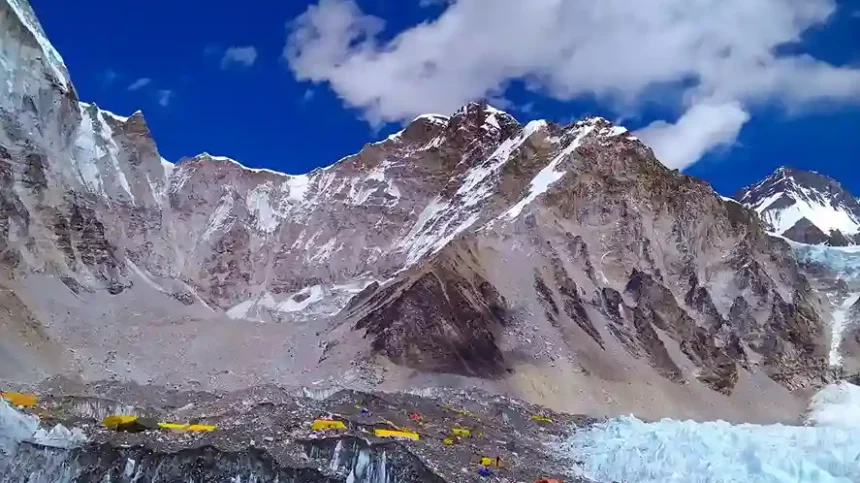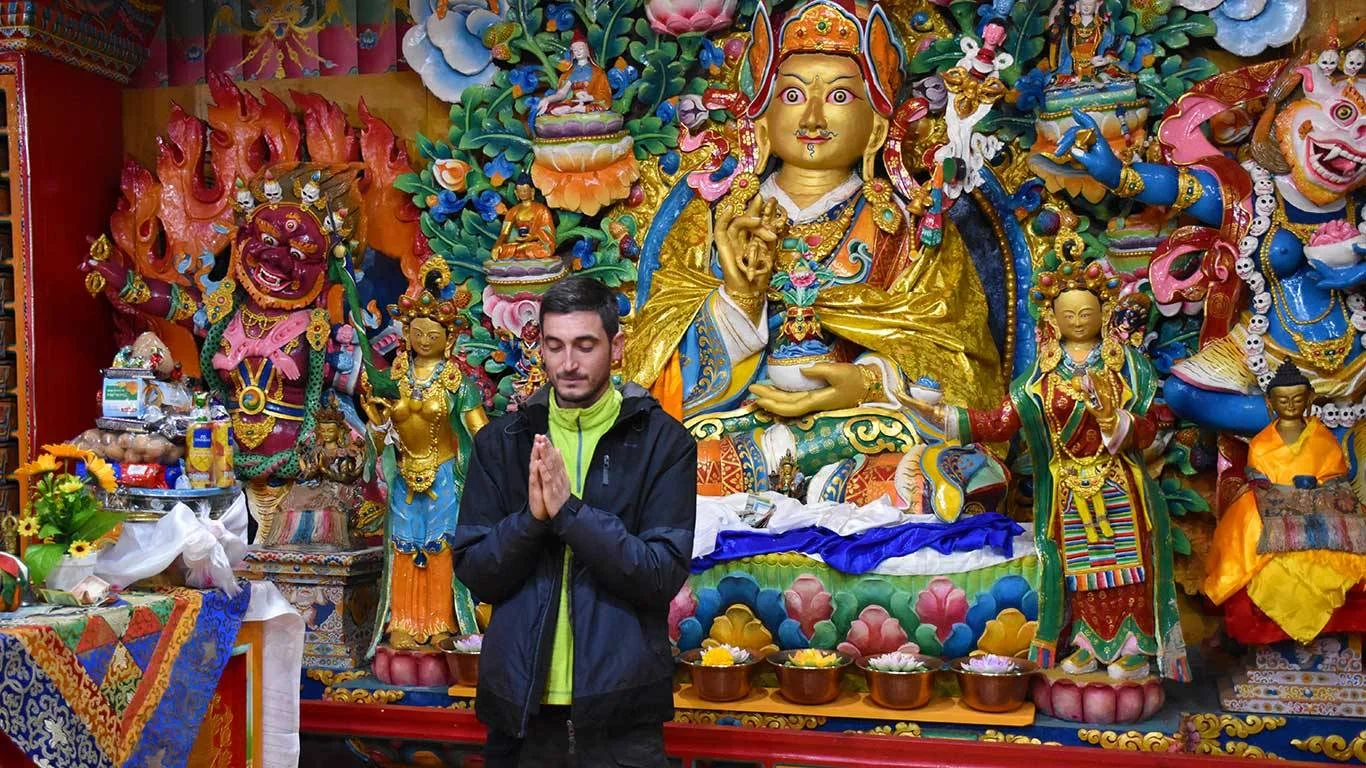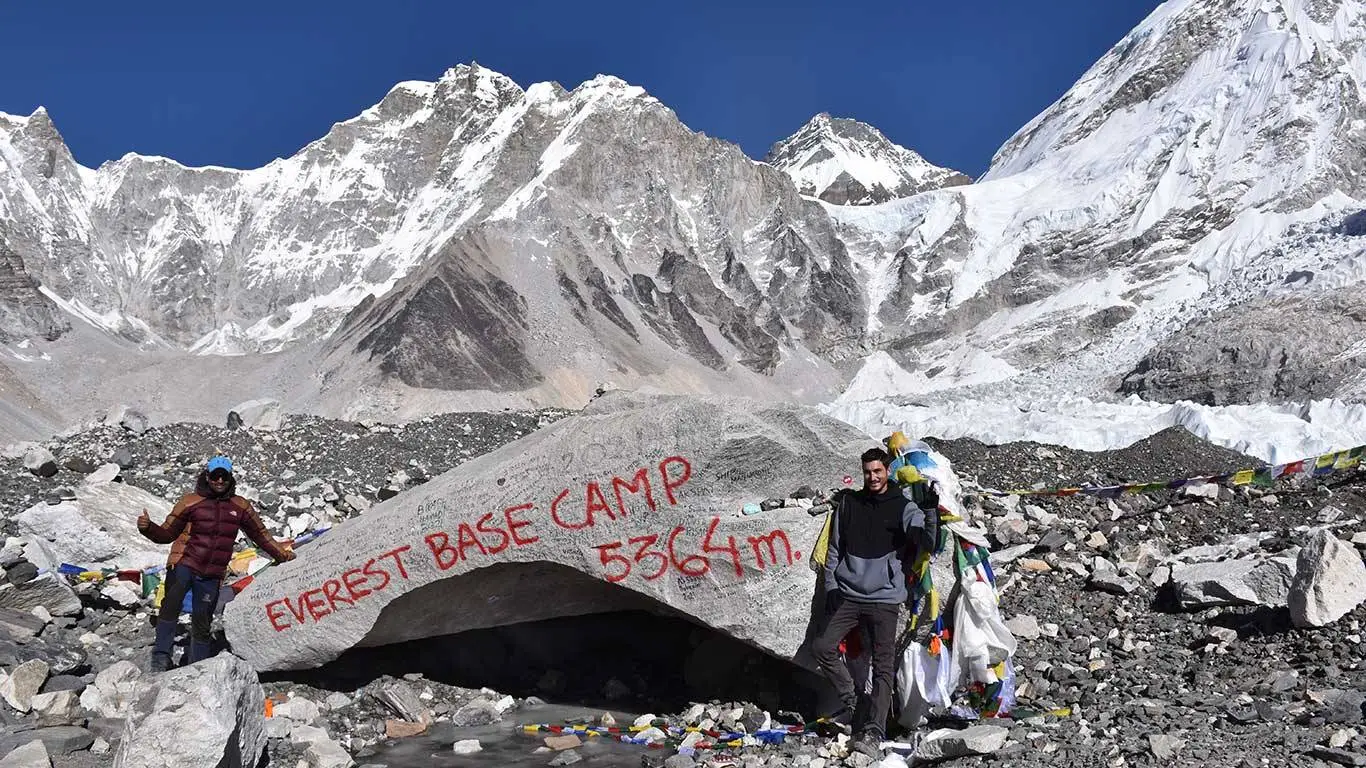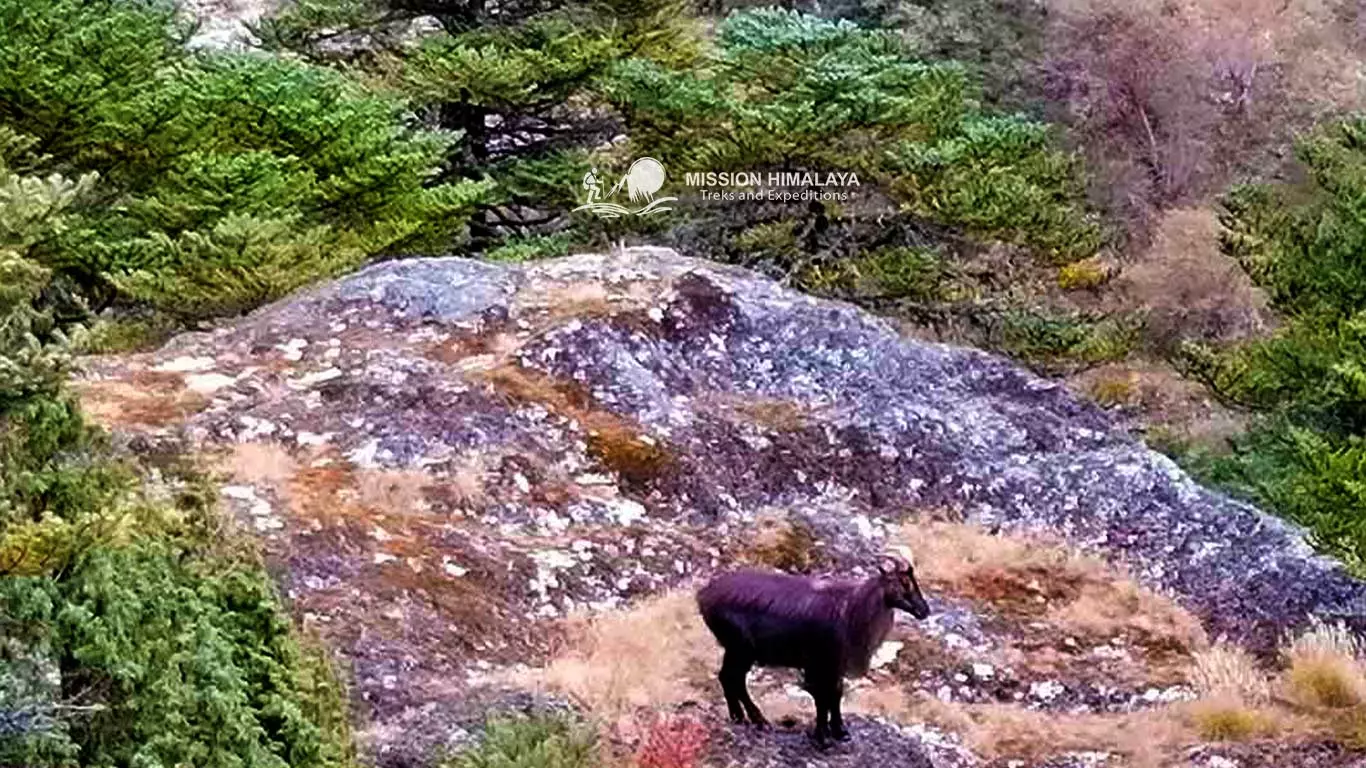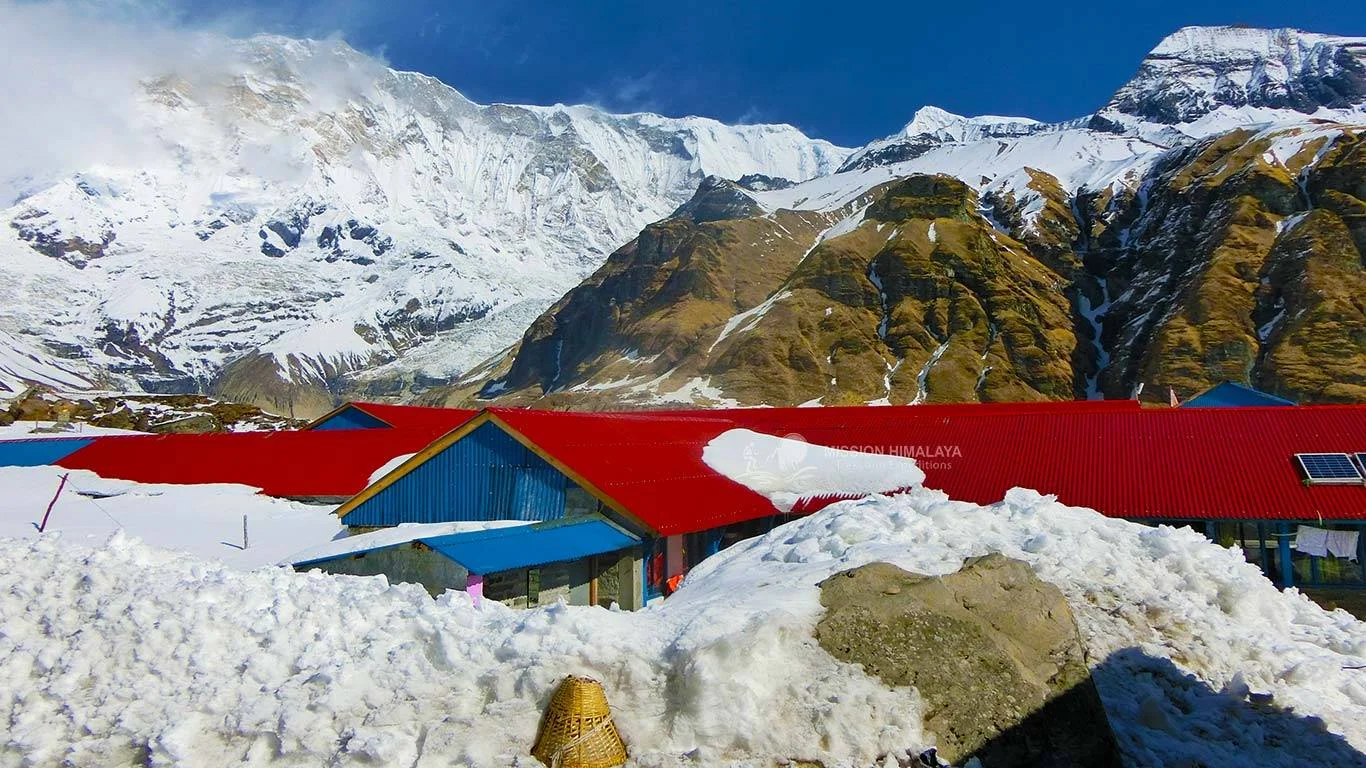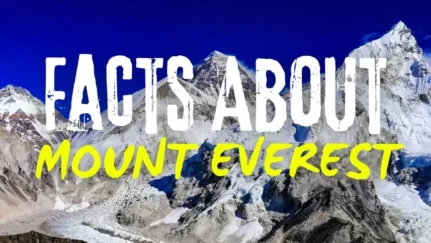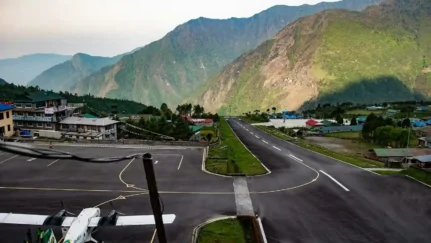Everest Base Camp Trek Weather
Why Knowing the Weather of the Everest Base Camp Trek is Important
When you’re planning to trek to Everest Base Camp, knowing the Everest region climate is super important for having a fun and safe adventure. The weather in the Everest area can change quickly, so understanding it can make a big difference to your trip. Let’s talk about why knowing the weather is crucial and how it affects your trek.
Safety First: The weather is a big part of keeping everyone safe on the Everest Base Camp trail. The high altitude brings many weather challenges that can be risky if you’re not prepared.
Cold Temperatures: At high altitudes, it gets really cold, especially at night. If you don’t know what to expect, you could get hypothermia or frostbite. Therefore, Knowing the Everest base camp weather helps you pack the right clothes to stay warm and safe.
Snowstorms: Snowstorms are common and can make it hard to see, making it tricky and dangerous to find your way. If you’re not ready, you could get into serious trouble. Checking the Everest base camp trek weather forecast can help you decide when to trek and when to stay indoors.
Altitude Sickness: Cold weather can make altitude sickness worse. Knowing how the weather affects altitude can help you get used to the height and avoid health problems.
What to Pack:
The Everest base camp weather tells you what to pack for the trek. Being aware of the weather makes packing easier and ensures you have everything you need for a comfy trek.
Clothes: Knowing the temperatures helps you pack the right layers to stay warm and dry. You’ll need waterproof and insulated clothing for rain or snow.
Gear: Different weather needs different gear, like crampons for icy paths or sun protection for sunny days. Knowing the weather means you’ll have the right stuff to handle whatever comes your way.
Enjoying the Trek: The weather can make your Everest Base Camp trek amazing or not so great. Clear skies make the views awesome and the trek more enjoyable.
Amazing Views: One of the best parts of the trek is the stunning mountain views. Clear weather lets you see everything perfectly. Bad weather, like heavy clouds or fog, can hide the views and make the trek less fun.
Trail Conditions: Good Everest base camp trek weather makes the trails easier to walk on. Rain makes them muddy and slippery, and snow can make them hard to follow. Knowing the weather helps you plan when the trails are in the best shape.
Feeling Good: Good weather makes you feel better both mentally and physically. Nice weather lifts your spirits and makes the trek less tiring. This makes the whole experience more enjoyable.
In short, knowing the weather for the Everest Base Camp trek is key to staying safe, packing right, and having a great time. Being prepared and informed about the weather helps you have a successful, safe, and memorable adventure on one of the world’s most famous treks.
The General Climate of the Everest Region
The Everest region, where the world’s highest peak is located, has a unique and tough climate called the alpine climate. This climate comes with high altitudes and extreme weather conditions. Understanding this climate is really important for trekkers planning a trip to Everest Base Camp. Here’s what you need to know.
Alpine Climate
Everest region climate is shaped by its high elevation and location. This climate has cold temperatures all year round, which get colder as you go higher and there’s less oxygen. The alpine climate affects everything about your trek.
Everest Base Camp Trek Weather Patterns and Temperatures Throughout the Year
Winter (December to February):
Temperature: Winter is the coldest season. In places like Namche Bazaar, daytime temperatures are around 0°C to 5°C (32°F to 41°F), and at night it can drop to -10°C (14°F) or lower. At Everest Base Camp, daytime temperatures are often below freezing, and nighttime temperatures can drop to -20°C (-4°F) or even lower.
Weather Conditions: Winter has clear skies but very harsh conditions. Snowfall is common, especially at higher places, making trekking tough. Strong winds make it even colder, increasing the risk of frostbite.
Spring (March to May):
Temperature: Spring brings warmer temperatures. During the day at lower places, temperatures are between 10°C to 15°C (50°F to 59°F), and at night it’s around -5°C to 0°C (23°F to 32°F). At Everest Base Camp, daytime temperatures range from -5°C to 5°C (23°F to 41°F).
Weather Conditions: This season has clear and stable weather. Snow starts to melt, making the trails easier to walk on. The clear skies give you amazing views of the mountains.
Summer (June to August):
Temperature: Summer is also the monsoon season. Daytime temperatures at lower places can reach 15°C to 20°C (59°F to 68°F), and nighttime temperatures are around 5°C to 10°C (41°F to 50°F). At higher places, it’s cooler but not as extreme as winter.
Weather Conditions: The monsoon brings heavy rain, making the trails muddy and increasing the risk of landslides. Visibility can be low due to clouds and rain. Snowfall is less frequent than in winter.
Autumn (September to November):
Temperature: Autumn is a great time for trekking with stable weather. Daytime temperatures at lower places range from 10°C to 15°C (50°F to 59°F), and at night it’s around -5°C to 0°C (23°F to 32°F). At Everest Base Camp, daytime temperatures range from -5°C to 5°C (23°F to 41°F).
Weather Conditions: The Everest base camp trek weather is clear and dry in this season. The trails are less muddy, and the skies are clear, offering stunning views of the mountains. Many people prefer trekking in this season because of the stable weather and beautiful landscapes.
Precipitation Patterns
Snowfall: Snowfall is common in winter and can happen at higher places all year round. The amount of snow varies, with heavier snowfall often in winter. This affects trail conditions and visibility.
Rainfall: The monsoon season (June to August) brings heavy rain, making trails muddy and rivers swell. After the monsoon, rainfall decreases, leading to drier conditions in autumn.
Understanding the general Everest region climate helps you prepare for your trek, making sure you’re ready for whatever weather comes your way.
| Month | Temperature | Precipitation | Wind Conditions | Visibility |
|---|---|---|---|---|
|
January
|
Lukla: -8°C to -5°C (17°F to 23°F)
Namche Bazaar: -12°C to -7°C (10°F to 19°F) EBC: -20°C to -15°C (-4°F to 5°F) Diurnal Variation: Significant, with colder nights
|
Average Rainfall: Very low, mostly dry
Likelihood of Snowfall: High, especially at higher altitudes Impact on Trekking: Snow can make trails slippery and challenging
|
General Direction and Speed: Cold winds from the north, speed around 15-25 km/h (9-15 mph).
Impact on Trekking: Increased chill factor, proper windproof gear essential
|
Average Visibility: Generally clear
Chances of Clear Days: High, with excellent views of the Himalayas
|
| February
|
Lukla: -6°C to -3°C (21°F to 27°F)
Namche Bazaar: -11°C to -6°C (12°F to 21°F) EBC: -18°C to -13°C (0°F to 8°F) Diurnal Variation: Still significant, with very cold nights
|
Average Rainfall: Minimal
Likelihood of Snowfall: Frequent, especially at higher elevations Impact on Trekking: Snow can obstruct paths and create challenges
|
General Direction and Speed: Cold, steady winds from the north, speed around 10-20 km/h (6-12 mph)
Impact on Trekking: Potentially harsh, windproof layers recommended
|
Average Visibility: Typically good
Chances of Clear Days: High, allowing for clear mountain views
|
| March
|
Lukla: -2°C to 3°C (28°F to 37°F)
Namche Bazaar: -6°C to 2°C (36°F to 36°F) EBC: -13°C to -8°C (9°F to 17°F) Diurnal Variation: Noticeable, with warming temperatures during the day
|
Average Rainfall: Low, sporadic showers possible
Likelihood of Snowfall: Occasional, particularly at higher altitudes Impact on Trekking: Snow and ice can still pose challenges
|
General Direction and Speed: Winds from the northwest, moderate speeds around 10-15 km/h (6-9 mph)
Impact on Trekking: Less intense than winter, but windproof gear is still recommended
|
Average Visibility: Improving
Chances of Clear Days: Increasing, with clearer skies and better views
|
| April
|
Lukla: 4°C to 10°C (39°F to 50°F)
Namche Bazaar: 2°C to 10°C (36°F to 50°F) EBC: -8°C to -3°C (17°F to 27°F) Diurnal Variation: Moderate, with warmer days and cooler nights
|
Average Rainfall: Low, sporadic showers
Likelihood of Snowfall: Rare, mainly at higher altitudes Impact on Trekking: Generally favorable conditions, occasional rain
|
General Direction and Speed: Light winds from the east or southeast, around 5-10 km/h (3-6 mph)
Impact on Trekking: Minimal impact, comfortable trekking conditions
|
Average Visibility: Excellent
Chances of Clear Days: Very high, with stunning views of Everest and surrounding peaks
|
| May
|
Lukla: 7°C to 15°C (45°F to 59°F)
Namche Bazaar: 5°C to 13°C (41°F to 55°F) EBC: -4°C to 2°C (25°F to 36°F) Diurnal Variation: Noticeable, with warmer temperatures during the day and cooler nights
|
Average Rainfall: Increasing, with the onset of the monsoon season
Likelihood of Snowfall: Rare, mostly rain at lower altitudes Impact on Trekking: Possible rain can create muddy trails and make trekking challenging
|
General Direction and Speed: Winds picking up from the southwest, speeds around 10-20 km/h (6-12 mph)
Impact on Trekking: Can be gusty, windproof gear is advisable
|
Average Visibility: Generally good but decreasing with monsoon onset
Chances of Clear Days: Still good, but cloud cover increasing
|
| June
|
Lukla: 10°C to 18°C (50°F to 64°F)
Namche Bazaar: 8°C to 16°C (46°F to 61°F) EBC: 0°C to 6°C (32°F to 43°F) Diurnal Variation: Moderate, with warm days and cooler nights
|
Average Rainfall: High, with frequent and heavy showers
Likelihood of Snowfall: Unlikely at lower altitudes; snow possible at higher elevations Impact on Trekking: Heavy rain can lead to slippery trails and challenging conditions
|
General Direction and Speed: Strong monsoon winds from the south, speeds around 20-30 km/h (12-18 mph)
Impact on Trekking: Can be intense, creating challenging conditions. Strong wind protection is essential
|
Average Visibility: Poor, with frequent cloud cover and rain
Chances of Clear Days: Low, visibility often compromised by clouds and rain
|
| July
|
Lukla: 11°C to 19°C (52°F to 66°F)
Namche Bazaar: 9°C to 17°C (48°F to 63°F) EBC: 2°C to 8°C (36°F to 46°F) Diurnal Variation: Limited, with generally warm temperatures throughout the day
|
Average Rainfall: Very high, with frequent and intense monsoon showers
Likelihood of Snowfall: Unlikely at lower altitudes; snow possible at higher elevations Impact on Trekking: Heavy rain and risk of landslides; trekking conditions can be very difficult
|
General Direction and Speed: Strong monsoon winds from the south, speed around 25-35 km/h (15-22 mph)
Impact on Trekking: High winds combined with rain can be harsh; strong, waterproof gear is necessary
|
Average Visibility: Very poor, with extensive cloud cover and rain.
Chances of Clear Days: Minimal, visibility is significantly reduced
|
| August
|
Lukla: 10°C to 18°C (50°F to 64°F)
Namche Bazaar: 8°C to 16°C (46°F to 61°F) EBC: 1°C to 7°C (34°F to 45°F) Diurnal Variation: Moderate, with warm days and cool nights
|
Average Rainfall: High, with continued monsoon showers
Likelihood of Snowfall: Rare at lower altitudes; snow possible at higher elevations Impact on Trekking: Ongoing heavy rain can make trails muddy and trekking challenging
|
General Direction and Speed: Monsoon winds from the south, speeds around 20-30 km/h (12-18 mph)
Impact on Trekking: Winds can be strong, impacting trekking comfort; good windproof gear is essential
|
Average Visibility: Poor, with persistent cloud cover and rain
Chances of Clear Days: Low, visibility often reduced by monsoon weather
|
| September
|
Lukla: 4°C to 10°C (39°F to 50°F)
Namche Bazaar: 2°C to 10°C (36°F to 50°F) EBC: -8°C to -3°C (17°F to 27°F) Diurnal Variation: Moderate, with cooler nights and milder days
|
Average Rainfall: Decreasing, with fewer showers than in the monsoon months
Likelihood of Snowfall: Rare, primarily at higher elevations Impact on Trekking: Improving conditions, with less rain making trails more manageable
|
General Direction and Speed: Calmer than monsoon months, with moderate winds around 5-15 km/h (3-9 mph)
Impact on Trekking: More favorable, with less impact on trekking comfort
|
Average Visibility: Improving
Chances of Clear Days: Increasing, with clearer skies and better mountain views
|
| October
|
Lukla: 7°C to 15°C (45°F to 59°F)
Namche Bazaar: 5°C to 13°C (41°F to 55°F) EBC: -4°C to 2°C (25°F to 36°F) Diurnal Variation: Moderate, with pleasant daytime temperatures and cooler nights
|
Average Rainfall: Minimal, with very little rainfall
Likelihood of Snowfall: Rare at lower altitudes; occasional at higher elevations Impact on Trekking: Generally favorable, with dry trails and minimal disruption
|
General Direction and Speed: Calm, with light winds around 5-10 km/h (3-6 mph)
Impact on Trekking: Minimal, creating comfortable trekking conditions
|
Average Visibility: Excellent
Chances of Clear Days: High, with clear skies and stunning mountain vistas
|
| November
|
Lukla: -2°C to 5°C (28°F to 41°F)
Namche Bazaar: -6°C to 2°C (21°F to 36°F) EBC: -13°C to -8°C (9°F to 17°F) Diurnal Variation: Significant, with very cold nights and milder days
|
Average Rainfall: Very low, with minimal precipitation
Likelihood of Snowfall: Increasing, especially at higher altitudes Impact on Trekking: Snow can make trails more challenging; otherwise, conditions are relatively dry
|
General Direction and Speed: Increasingly strong, with winds around 10-20 km/h (6-12 mph)
Impact on Trekking: Stronger winds can make trekking conditions more challenging; adequate protection is required
|
Average Visibility: Generally good
Chances of Clear Days: High, with clear skies and excellent visibility
|
| December
|
Lukla: -8°C to -5°C (17°F to 23°F)
Namche Bazaar: -12°C to -7°C (10°F to 19°F) EBC: -20°C to -15°C (-4°F to 5°F) Diurnal Variation: Significant, with extremely cold nights |
Average Rainfall: Very low, mostly dry
Likelihood of Snowfall: High, particularly at higher altitudes Impact on Trekking: Snow can impact trail conditions, making trekking more challenging |
General Direction and Speed: Strong and cold winds from the north, speed around 15-25 km/h (9-15 mph)
Impact on Trekking: Harsh, with potential for severe wind chill; windproof gear essential |
Average Visibility: Generally good
Chances of Clear Days: High, with potential for clear, crisp views of the Himalayas |
Everest Base Camp Trek Weather Chart
By considering the above data, we have prepared a detailed chart on the Everest Base camp Weather. Here is it-

Comparison to Other Regions
The Everest base camp weather is much tougher compared to places at lower altitudes or areas with milder climates. Unlike temperate zones that have moderate temperatures and easy seasonal changes, the Everest region has extreme cold, high winds, and the effects of high altitude. This makes trekking in the Everest region very challenging and needs careful planning and preparation.
In summary, the Everest region climate is shaped by its high-altitude environment, with cold temperatures, lots of snowfall, and different weather patterns during the year. Knowing these climate patterns is important for planning a successful trek to Everest Base Camp, ensuring you are ready for the unique and tough conditions.
Factors Affecting Weather (Altitude, Monsoon, Jet Stream)
To understand the Everest base camp trek, you need to know about a few key factors: altitude, the monsoon season, and the jet stream. Each of these affects the weather you’ll experience during your trek.
Altitude
Temperature Effects: As you go higher, it gets colder because the air is thinner and holds less heat. For every 1,000 meters (3,280 feet) you climb, the temperature drops by about 6.5°C (11.7°F). So, even if it’s mild at lower places, it can be extremely cold at higher spots like Everest Base Camp.
Oxygen Levels
Higher altitudes have less oxygen, which can cause altitude sickness. Symptoms include headaches and dizziness, and in severe cases, conditions like high-altitude pulmonary edema (HAPE) and high-altitude cerebral edema (HACE). It’s important to acclimatize and be aware of these risks.
Monsoon Cycle
Monsoon Overview: The monsoon season is from June to August and brings a lot of rain. Seasonal changes in wind and moisture levels cause this.
Impact on Weather: During the monsoon, winds from the Indian Ocean bring heavy rain as they rise over the Himalayas. This can lead to:
Increased Humidity: It feels more uncomfortable and oppressive.
Rainfall: Trails get muddy and slippery, making trekking harder and increasing the risk of landslides.
Visibility: Clouds and rain can block mountain views.
Post-Monsoon Period: After the monsoon, the Everest region climate becomes stable, with drier conditions and better visibility. Autumn (September to November) is a great time for trekking as the trails are less muddy and the skies are clearer.
Jet Stream
Jet Stream Overview: The jet stream is a fast-moving air current high above the Earth that flows from west to east. It affects weather patterns and the Everest region.
Influence on Weather Patterns
Wind Speeds: The jet stream can bring strong winds, causing severe weather conditions ike windstorms and making it feel colder.
Temperature Fluctuations: The jet stream’s movement can quickly change temperatures. When it moves south, it brings cold air, and when it shifts north, temperatures can rise.
Weather Fronts: It affects the movement of weather fronts, leading to sudden weather changes.
Seasonal Variations: The jet stream’s position changes with the seasons, impacting the timing and intensity of Everest base camp weather patterns. During pre-monsoon and post-monsoon periods, it can bring more stable weather, which is good for trekking.
In summary, the Everest base camp trek weather is influenced by altitude, the monsoon cycle, and the jet stream. Altitude affects temperature and oxygen levels, making high-altitude trekking tough. The monsoon season brings heavy rain and humidity, affecting trail conditions and visibility. The jet stream influences wind speeds and temperature changes. Knowing these factors helps you prepare for the Everest Base Camp trek and ensures a safe and enjoyable journey.
Common Everest Base Camp Trek Weather Phenomena
Snowfall
Occurrence: Snowfall is common, especially in winter, but it can also happen in spring and early autumn. Snow can make trails slippery and hard to see.
Impact: Heavy snowfall can make trails challenging to navigate and hide landmarks, increasing the risk of getting lost. Therefore, it’s important to be prepared and check Everest base camp trek weather forecasts.
Windstorms
Occurrence: The Everest region often experiences strong winds, especially at higher altitudes. These winds can be intensified by the jet stream and are common throughout the year, especially in winter.
Impact: High winds can cause wind chill, making it feel much colder. They can also lead to hazardous conditions like blowing snow and reduced visibility. Strong winds can affect your trekking pace and safety, so careful planning and appropriate gear are essential.
Long-Term Weather Trends
Climate Change Impact
Temperature Increases: Over the years, temperatures in the Everest region have been rising, affecting snowfall patterns and glacial melting rates.
Changing Precipitation Patterns: The monsoon season has become more unpredictable, with periods of intense rainfall followed by dry spells. This can influence trail conditions and the risk of landslides.
Glacial Changes: Glaciers in the Everest region are retreating due to rising temperatures. This can affect the landscape and weather patterns, including changes in local precipitation and runoff.
The weather patterns and trends in the Everest region are marked by distinct seasonal changes, common weather phenomena like snowfall and windstorms, and long-term trends influenced by climate change. Understanding these patterns is essential for planning a safe and enjoyable trek to Everest Base Camp. Being aware of the general weather conditions, potential weather phenomena, and long-term trends helps trekkers prepare adequately and make informed decisions during their journey.
Everest Base Camp Trek Weather Forecast
If you would like to know more about Everest Base camp trek weather, then we have amazing resources for you. Here is a collection of the mountain weather forecasts which is especially best for the Everest Base Camp Trek journey in Nepal-
- Weather forecast for Lukla
- Interactive Weather Map for Everest Region
- Weather forecast for Namche Bazaar
- Everest base camp (Kalapatthar) weather forecast
- Mt. Everest Weather Forecast
- 14-day Everest base camp trek (China) weather forecast
Conclusion
In conclusion, knowing the weather for the Everest Base Camp trek is super important for staying safe, packing right, and having fun. If you’re well-prepared and know about the weather, your trek will be safer, more enjoyable, and memorable. The Everest region has a special alpine climate affected by altitude, monsoon seasons, and the jet stream, so careful planning is necessary. With this information, trekkers can handle the challenges and enjoy the amazing beauty of the Himalayas.
Final Thoughts
The Everest Base Camp trek is an adventure of a lifetime with incredible natural beauty. By understanding the weather and being prepared, you can have a safe and fun trek. Remember, the key to a great trek is planning well, respecting nature’s power, and keeping informed about the changing weather in the Everest region. Happy Trekking!
Birendra Duwadi by profession a trekking and tourist guide and an enterpreur whose passion is trekking in the himalayas. Started Mission Himalaya Treks in 2015 with a new vision to introduce Nepal's Himlayas to the world. His vision is to explore and documentation new trekking routes . Birendra leads Mission Himalaya, a company that change the qualities of trekking in Nepal.

